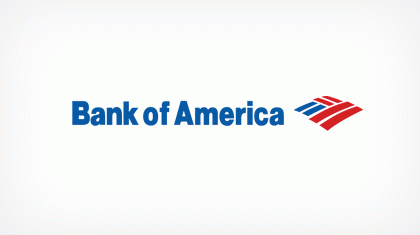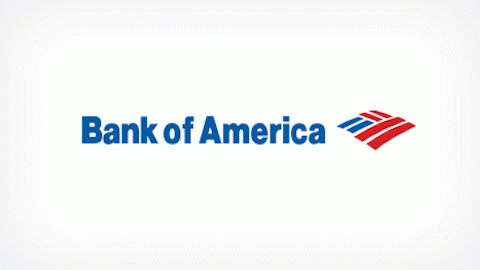Cross-selling sounds like the perfect cure for banks still ailing from the financial crisis. Net interest margins are at significant lows, and banks are trimming expenses to keep profits at meaningful levels. So adding new sales to old customers should be the perfect fix. But – not all banks are created equal. As such, cross-selling won’t work effectively for every bank.
Bank of America Corp (NYSE:BAC) is a great example. Recently the bank implemented a Merrill Lynch-Bank of America cross-selling strategy that is bound to miss expectations. To explain why it will fail (see below for why) we must first look at the cross-selling success stories. Then we will examine those who failed to execute the strategy and why Bank of America Corp (NYSE:BAC) will also fail to meet its marks.
Successful cross-selling
Wells Fargo & Co (NYSE:WFC) is the go-to example of successful cross-selling. It has consistently sold an increasing number of products to households each year.

Wells Fargo’s achievement comes from its well-developed strategy and organizational commitment to cross-selling. Many other firms struggle to imitate this strategy, but few have nailed it down. One of the keys to Wells Fargo’s strategy is the successful integration of Wachovia. The integration included three key efforts:
1. Assimilate IT
2. Keep the structure flat
3. Stick to one business model
Through these three steps, the two large banks came together as one united group, giving Wells Fargo an even broader audience to whom it could cross-sell business and consumer products.
BB&T Corporation (NYSE:BBT) is another example of successful cross-selling. Its corporate culture integrates all of its business units (such as business banking, commercial real estate, investments, and insurance). Each unit is a functioning part of the whole, rather than operating within its own “silo”. The bank’s consistent effort to bring all these business units together allows for effective cross-selling.
BB&T’s strategy also permits the bank to keep profit-per-customer high, even when its lending margin is shrinking (from the Fed’s bond buying program). The obvious result is that BB&T is able to procure “sticky”, profitable relationships with its customers without having to increase loan volume during a time when long-term rates permit little profit. The graph below depicts how BB&T retained a consistent profit margin in comparison with big banks that did not effectively cross-sell.

Wells Fargo and (NYSE:WFC) BB&T teach us that a bank must have the right corporate culture and IT infrastructure to successfully execute a cross-selling strategy. Next we look at banks that lacked these traits.
Cross-seller wannabes
After merging with Smith Barney and Travelers in the early 2000s, Citigroup Inc. (NYSE:C) attempted to better cross-sell products. At first Citi saw increased profits ($24.6 billion in 2005) and even took second on the Fortune 500 list. But by 2009, the tide had turned. Citi faced an $18.7 billion loss as a result of over-extension, poor lending habits, and a failure to fully integrate its former acquisitions. With each business unit just trying to survive, effective cross-selling ended and Citi eventually began selling Smith Barney and Travelers. The problem: Citi never fully assimilated its culture and business structure with Smith Barney and Travelers. In fact, when Citi sold the remainder of Smith Barney last year to Morgan Stanley (NYSE:MS), Citi prepped for a $2.9 billion loss.
Morgan Stanley also tried to buoy cross-selling in 2010. This effort came after its merger with Smith Barney. The problem is that Morgan Stanley Smith Barney struggled and still struggles with a number of challenges, notably ineffective IT. Taken from a Reuters article August 31, 2012:
Several dozen Morgan Stanley Smith Barney advisers who manage tens of billions of dollars of client money are considering leaving the firm, saying that widespread technology problems have made it very difficult for them to do their jobs.
To put that number in perspective, assume $20 billion in assets with a 1% management fee and no product fees. Morgan Stanley Smith Barney would be out $200 million in revenue – a conservative estimate considering that calculation did not include product fees nor cross-selling. The underlying problem? Morgan Stanley did not have the infrastructure in place to succeed.
BofA tries its hand
Bank of America Corp (NYSE:BAC) recently implemented a cross-selling strategy. However, Bank of America’s attempt will likely end in failure because it lacks a unified corporate culture. In short, I believe that, like Citigroup and Morgan Stanley, its various businesses (namely Merrill Lynch) operate in “silos,” both operationally and technologically.
Also, conflict between Merrill Lynch employees and Bank of America Corp (NYSE:BAC) prevents successful cross-selling efforts. Merrill Lynch financial advisors are not on board with this strategy – and Merrill’s wealth management clients are the ones who would be doing the buying. Unless Bank of America finds a better way to integrate Merrill Lynch, the corporate culture will remain disjointed. As we saw with Citi and Morgan Stanley, mergers must come together in one united front. Otherwise cross-selling strategies can’t reach their potential.
Conclusion
Cross-selling is a great route to increased revenues, especially in this low interest rate environment. However, Bank of America’s culture is too disjointed to hit its goals. So if you are thinking of buying Bank of America on the recent news, don’t.
Article by Michele Milheim, edited by Chris Marasco. Neither has a position in any stocks mentioned. The Motley Fool recommends Wells Fargo. The Motley Fool owns shares of Bank of America, Citigroup Inc (NYSE:C) , and Wells Fargo.
The article This Bank’s Strategy Will Fail originally appeared on Fool.com.
Copyright © 1995 – 2013 The Motley Fool, LLC. All rights reserved. The Motley Fool has a disclosure policy.




